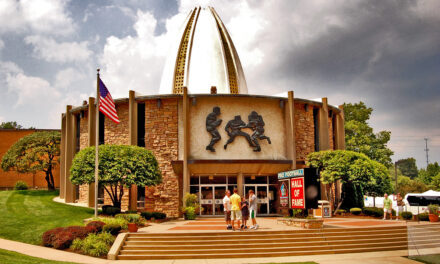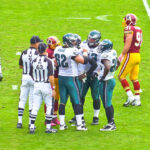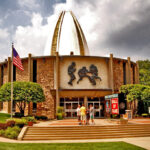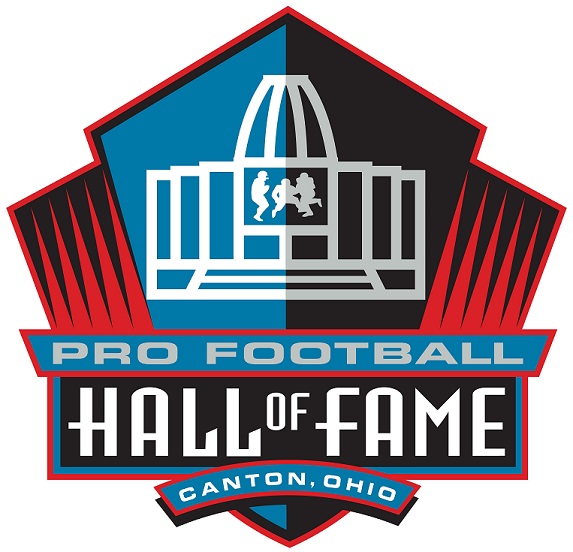I consider myself fairly well read on the history of the National Football League. I’ve been watching games since I was six and have long been fascinated by the game and the league’s history pretty much ever since.
I think remembering and recognizing the great personalities and players that made the league what it has become today is important for fans and hope it is important to today’s players, who are benefiting from the work done by their older brethren.
That said, as the 50-year anniversary of the American Football League comes along, I have realized I’m not as well read on the NFL’s former rival league. Sure, I knew about the merger and about some of the personalities – Joe Namath, George Blanda, Len Dawson, et al.
And I’d guess I’m not alone. With the merger that followed and the years that have since passed, the AFL has sadly become a footnote in some fans’ minds.
But not everyone has forgotten. Angelo Coniglio has created a Web site, www.remembertheafl.com, aimed at celebrating the AFL’s history and its contributions to the league that resulted from the merger. He established an AFL Hall of Fame that recognizes more than 120 players, owners, and other contributors to the league’s success. And he’s passionate about informing and reminding today’s fans of the impact the AFL had on what the NFL has become today.
Mr. Coniglio agreed to answer some questions from Zoneblitz about his Web site and his memories of the AFL.
Zoneblitz: On your site you recognize something around 125 players, coaches, owners and other officials at the AFL Hall of Fame – describe how you got started on this project?
Coniglio: I remember the Buffalo Bills of the All-America Conference – a league that was scoffed at by the NFL, which did not accept the Bills when the All-America Football Conference (AAFC) folded. But the Cleveland Browns of that “inferior league” won the NFL championship in their first year in the league, and dominated it for years. When the AFL came along, I became a Bills and an AFL fan, and heard the same disparaging remarks about the AFL by the established league that they had made about the AAFC, and I figured they were just as wrong. (answer continued)
The first question I asked on June 6, 1966 when the merger was announced was “what are they going to call the merged league?” I and many other AFL fans felt it should be “Major League Football” or “Professional Football” with the AFL and the NFL keeping their names, rules, and logos. There was nothing in Public Law 89-800, the law that permitted the merger, which prohibited that. Then it would have been like Major League Baseball, two leagues, with a championship game between the champs of each league, instead of just an NFL championship game.
When I developed a family Web site in 2000, I included the things I like, such as the American Football League. I soon had so many pages devoted to it that I created a separate site, www.remembertheafl.com.
I have an AFL Hall of Fame because I believe many great personalities of the league have been given short shrift by the NFL-dominated media, and I found that Google or Yahoo! searches for “AFL” or its players returned very little about the league. One exception was Robert Phillips’ site, which is now at http://afl-football.50webs.com/. His was the first comprehensive site about the AFL, and it inspired me. One aspect of my site is the AFL Hall of Fame, which now gives Internet surfers a chance to read about these great players.
Zoneblitz: Why did this mission become so important to you?
Coniglio: Truth. The NFL is one of the richest, most powerful entities in the world, today’s young Professional Football fans, and even active pro players are fed comments like “Super Bowl III was one of the NFL’s greatest games,” and “George Blanda played 27 years in the NFL.”
Of course, Super Bowl III was one of the AFL’s greatest games; Blanda actually played ten years in the AFL, and in fact to this day declares that he is an “AFL man.” I believe that since its inception, the AFL was much better than what the NFL and its writers made it out to be, and I’d like today’s fans and players to know that.
Zoneblitz: Why do you think it is so important to preserve the history of the AFL independently of preserving the history of professional football in general?
Coniglio: Colorful uniforms, players’ names on jerseys, two point conversions, passing offense instead of “three yards and a cloud of dust”, official time on the scoreboard instead of in the referee’s pocket, national TV coverage, double-headers, revenue sharing of gate and TV monies to help small-market teams, recruiting and drafting from small and predominantly black colleges, expansion of Professional Football from a predominantly northeastern sport to the south, midwest, and west – it wasn’t the NFL that did this, it was the AFL. It should be recognized and remembered as the genesis of modern Professional Football.
Zoneblitz: What kind of response to you get from fans and former AFL players?
Coniglio: To this day, AFL fans (including many from NFL areas) make comments like “they never should have merged”; “I still root for any AFL team if it’s playing an NFL team”; “I’m bored by Super Bowls that don’t have a former AFL team playing”; etc. Former AFL players are gracious and appreciative of being recognized, and believe more of their brethren should be in the Pro Football Hall of Fame.
Zoneblitz: How gratifying was it to see Ralph Wilson enshrined in Canton this month?
Coniglio: Very. The AFL, and therefore Professional Football as we know it today, would not exist if it weren’t for Wilson. Typically, his induction was long overdue. For example, Hank Stram was inducted when he was too old, ill and weak to give his acceptance speech, NINE YEARS AFTER the man whose team he beat in the last World Championship game (Bud Grant). Why? Grant coached in the NFL, Stram coached in the “inferior” AFL.
Zoneblitz: Who are the three or four most deserving Hall of Fame candidates from the AFL who are currently not enshrined in Canton?
Coniglio:
Johnny Robinson:
Larry Wilson played for the NFL’s Cardinals from 1960 through 1972, a total of 169 games. He made the NFL Pro Bowl 8 times. He had 52 career interceptions and 44 career points. In 1966, he had 10 interceptions. He did a minor amount of punt/kickoff returning, rushing, or receiving. He played in one post-season game, the laughable NFL “Runner-up Bowl”, in 1964. He was inducted to the Pro Football Hall of Fame in 1978, six years after he retired, one year after he was eligible.
Meanwhile, Robinson played for the AFL’s Texans/Chiefs from 1960 through 1971, a total of 164 games. He was an AFL All-star six times and made the Pro Bowl once, after the leagues merged. He had 57 career interceptions and 108 career points. In 1966, like Wilson, he also had 10 interceptions. He averaged over 13 yards on 24 punt/kickoff returns, had over 600 yards receiving in each of his first two years, and a 4.4 yard rushing average on 150 carries. Unlike Wilson, Robinson saw meaningful post-season action. He played in three league championship games, his team winning all three. He played in two super bowls, his team going 1 – 1. In Super Bowl IV, playing with three broken ribs, he had an interception and a fumble recovery, helping the Chiefs defense hold that year’s version of “the greatest team in history” to seven points. He was eligible for the Hall of Fame in 1976. The NFL-oriented selectors overlooked his accomplishments because he played in the AFL. Now, Robinson’s a “senior candidate” and although the former selectors may have been replaced, their replacements are too young to remember Johnny. There are several other AFL stars who have “fallen between the cracks” in the same way.
Tom Sestak:
At 6-4, Tom Sestak had the size, speed and strength to handle any offensive lineman. He was a starter in his rookie year and, until a series of knee injuries slowed him down, he played without parallel in the American Football League. What separated him from other linemen was his great strength.
More than once Sestak amazed the opposition and his fans by reaching up, while sprawled on the turf behind the line of scrimmage, and tackling a running back in full stride, for a loss! Twice during his outstanding career he realized the defensive lineman’s “dream”, returning interceptions for touchdowns.
Sestak was and American Football League All-Star for three consecutive years in 1963, 1964 and 1965. He was the cornerstone of a defense that took the Bills to the AFL championships in 1964 and 1965, while holding opposing rushers without a touchdown for 17 straight games, and a member of the All-Time American Football League Team. His short career of seven years is the reason given for excluding him. There are eight men in the Hall of Fame who paid seven years or less. They played in the NFL.
Abner Haynes:
In 1960, Haynes led the American Football League in rushing attempts, yards, and TDs in the league’s first year. He was the league’s first Most Valuable Player, and its first Rookie of the Year. He captured the AFL’s first rushing crown with 875 yards, and also led the Dallas Texans in receiving, punt returns, and kickoff returns. Haynes spent three years in Dallas and two with the Kansas City Chiefs.
He still owns 11 franchise records, including most points in a game (30), most touchdowns in a season (19), most touchdowns in a game (5), most career 100-yard rushing games (12), most career rushing touchdowns (39) and most career combined yards (8,442). Over his career he was regularly among the American Football League’s top ten rushers, ranking third all-time, and the all-time leader in touchdowns, with 46.
He was Hall of Fame head coach Hank Stram’s most versatile and dangerous weapon from 1960-62, amassing 43 touchdowns and 4,472 yards on rushes and receptions. In 1962, he helped the Texans win the American Football League championship in the classic double-overtime victory over the defending champion Houston Oilers, scoring touchdowns on a 28-yard pass reception from quarterback Len Dawson, and on a 2-yard run.
Stram said “He was a franchise player before they talked about franchise players. He did it all – rushing, receiving, kickoff returns, punt returns. He gave us the dimension we needed to be a good team in Dallas.”
The 6-foot-1, 200-pound Haynes had great speed and dazzling moves in the open field, and set AFL records with 5 touchdowns in a game and 19 touchdowns in a season in 1961, and with 46 career rushing touchdowns. He also played for the Denver Broncos, the Miami Dolphins, and the New York Jets.
During his 8 professional seasons, Haynes carried the ball 1,036 times for 4,630 yards, a 4.5 average; caught 287 passes for 3,535 yards, a 12.3 average, and 20 touchdowns; returned 85 punts for 875 yards, a 10.3 average, and 1 touchdown; and ran back 121 kickoffs for 3,025 yards, a 25.0 average, and 1 touchdown, and ran a recovered fumble back for a td: 69 total touchdowns, for 414 points. His 12,065 combined yards is the American Football League record. Haynes had three games in which he gained 100 or more yards on 14 or fewer carries.
The argument used against Haynes’ induction, like Sestak, is that his career was too short. There are 20 men in the Hall of Fame who played eight or fewer years. Of course, THEY all played in the NFL.
Charlie Hennigan:
Hennigan joined the Houston Oilers in their first year, 1960. He scored the first touchdown in Oilers history, but played in only 11 games. After a promising rookie season, in 1961 he started all 14 games and established himself as a superstar in the American Football League by gaining 1,746 yards receiving, a Professional Football record that stood for 34 years. One of quarterback George Blanda’s main targets, Hennigan was the first professional football player to catch more than a hundred passes in a single season (101 in 1964) and to twice gain over 1,500 yards in pass receiving (1961 and 1964).
He holds the all-time records for most games (3) in a season with over 200 yards receiving, and most games (11) in a season with over 100 yards receiving. Hennigan had the All-time AFL single game record of 272 yards receiving, against the Boston Patriots on October 16, 1961. He was an American Football League All-Star five straight years, 1961 through 1965, and is a member of the All-Time All-AFL second team.
Zoneblitz: In this linked story you mention efforts to reach the commissioner and other NFL officials to make sure the AFL’s 50th anniversary is recognized this year – were you ultimately able to reach them and did they take any of your advice?
Coniglio: Some teams (Bills, Chiefs) responded to my letters, but the NFL never acknowledged them, even though I wrote three times. I don’t know if they took my advice, but they’re doing many of the things I suggested.
Zoneblitz: What do you think of the league’s efforts at recognizing the AFL thus far (such as the throwback uniforms at the Hall of Fame game) and their plans for the season?
Coniglio: I like the throwback uniforms (including officials), games between former AFL teams, and a special 50th Anniversary patch (worn only for some games). One thing I suggested was that all former AFL teams wear an AFL-50 patch all season – they’re not doing that. I would also like to see a reunion of all surviving AFL players at the next Super Bowl. No word on whether they’re going to do that.
Zoneblitz: What can fans and readers do to help with your project or in remembering or acknowledging the history of the AFL?
Coniglio: There are many AFL throwback hats, jerseys, pennants, coins and signs available. Fans can show they remember the AFL by purchasing these items. Nothing impresses the NFL like money. Fans can also nominate deserving AFL players to the Hall of Fame, and contact their home teams to let them know that they remember the AFL and want the teams to remember as well.
Fans can write to the NFL and ask that a Thanksgiving game be played every year, between two former AFL teams, restoring a tradition that began BEFORE the Cowboys ever played a Thanksgiving game.









Wow!! Thanks Andy and Mr. Coniglio for a wonderful interview and insight!!! Total class Andy and Tony.
Mr. Coniglio, I’m a nut like many other for knowledge of the AFL. :) I began my football obsession watching the 1971 Miami Dolphins at the age of 8.
I’d like to know your thoughts on the meteoric rise of the Miami Dolphins expansion team to powerhouse status in the NFL?
There’s some debate on Nick Buoniconti’s worthiness to be in the HOF. How good was he with the Patriots? He was pretty darn good with the Dolphins.
I believe other Miami defenders such as Jake Scott and the NFL’s All-Decade Saftey Dick Anderson deserve strong consideration. In additon 5-time Pro Bowler Bill Stanfill gets zero mention. Which if any Dolphin player from the 70’s Team belongs in the HOF??
IMO the Voters may be puting too much emphasis on playing for 10 years and fail to recognize that injuries (knee) were harder to overcome in the old days.
Finally, what was the greatest AFL team top to bottom of the 60’s??
I sent a letter of support to Senior Committee promoting these AFL Players with others help. Unfortunately I missed out on seeing many of the AFL players so I had to go by research only on some which stinks.
Great AFL (criteria at least 5 PB’s)
QB – John Hadl 1/6/60’s-70’s
RB – Floyd Little 1/5/60’s-70’s
RG – Walt Sweeney 2/9/60’s-70’s
LT – Winston Hill 0/8/60/70’s
LT – Jim Tyrer 6/9/60-70’s
C/LB – E.J. Holub 2/5/60’s
LG – Ed Budde 2/7/60’s-70’s
LDE – Jerry Mays 2/7/60’s-70’s
RLB – Larry Grantham 5/5/60’s-70’s
S – Goose Gonsoulin 2/5/60’s
S – Johnny Robinson 6/7/60’s
RLB – Larry Grantham 5/5/60’s-70’s
Larry wasn’t highly regarded by the NFL Draft coming out of Mississippi. He was undersized at 6?0? 210lbs and ultimately joined the New York Titans of the AFL. It didn’t take long for the league to recognize his ferocious hitting and knack for the ball.
In 1960, his rookie season, Larry finished with 5 int’s which is exceptional for a LB. He earned 1st team All-AFL honors his very first year and the next 4 seasons after making him a 5 for 5 on the 1st team All-AFL. He also was invited to the Pro-Bowl in 3 of those years.
Than came the down side of Larry’s career (Lol!!) where from 1965-1969 he was selected 2nd Team All-AFL 5 straight years by one publication or another and went to 2 more Pro-Bowls in 1966 and 1969. Just FYI in 1967 he had another 5 int year but failed to make the Pro-Bowl that year.
A remarkable feat for any player in any league is that Larry Gratham played at such a high level for 10 straight years. And then in 1969 his excellence was rewarded finally with a Super Bowl ring as a member of the New York Jets in Super Bowl III. It was he and his staunch Defense that was responsible for the stunning win over the Baltimore Colts 16-7 in that Super Bowl. Ironically the Colts were the team that had drafted Larry in the 15th Round in 1960 basically taking a pass on his ability to play in the NFL.
Larry Grantham played for two more years finishing out his career as a life long New York Titan-Jets player. His 12th and last year still brought recognition as a 2nd tean all-conference player(UPI). We know there were other great LB’s from the AFL named Nick Buoiconti, Bobby Bell and Willie Lanier in the NFL HOF. Two are MLB’s and one a LLB. Surely we have room for an AFL RLB?? :) He sure desrves it in my book for being a truely great player for such a long time. Please consider Mr. Grantham strongly this year for the HOF.
Supported by – Bradley Ehringer -New Jersey and A.P.; text by Anthony Parslow – Texas
THANK YOU!!
Now I’d ask Mr. Coniglio his opinions on the Senior HOF nominations of Floyd Little and Dick LeBeau? Is any AFL player a good one?
Tony:
Tony: I’m glad that Little is being considered as a senior. He’s in my AFL Hall of Fame (see http://www.conigliofamily.com/Broncos.htm#FLOYDLITTLE). Unfortunately, at the rate of two ‘seniors’ per year, most of the other very worthy AFL players in your list will never make it, or will be dead by the time they’re inducted. When the Baseball Hall of Fame finally realized the injustice they had wrought on black players, they inducted Negro Leagues players EN MASSE a few years ago. The Pro Football Hall of Fame should take a hard look at the REAL reason players like Robinson, Tyrer, Gonsoulin and Grantham are not enshrined, call a moratorium on the ‘two seniors per year’ rule, and induct them en masse, before they’re all dead. This would have been a good year to do it.
Mr Coniglio,
It’s a treat to hear your opinions. Thank you for responding. Many folks including myself have been very hard on Floyd Little upon hearing his nomination. It’s mainly out of frustration because so many other players we feel were better picks and continued to be passed over. That goes for the NFL Seniors too like 10 time nominee Jerry Kramer and 4/9 LB Chris Hanburger. It ridiculous!!
Unfortunately my gut tells me the NFL wouldn’t likely consider a mass entrance as you suggest. Heck they can’t even decide on two at a time. Futhermore I’m thinking Lebeau has a good chance of being turned down since his nomination is based only on his playing ability. Could be another one player at a time year. Lol!! Have to laugh to keep from crying about the whole mess. :)
I know Little is in your AFL HOF and worthy but do you really feel like he’s on a par with the NFL greats? I wasn’t overly impressed when I watched him except for the fact he ran so hard and seemed to take a lot of punishment. I know he meant everything to Denver but I’m not seeing the same sentiment spread in other parts of the country. I’ll keep reading chat
People in the Denver community seem to speak to his character almost more than his play. Just like the folks in Pittsburgh about LeBeau. /Is it becoming a popularity contest now like with coach Emmitt Thomas in Atlanta??
I just hate that they stuck a Half-Back or are about to that will have some of the lowest stats of all RB’s in the Hall and he’s from the AFL.. IMO Abner Hayes would of been much better to represent the AFL. I suppose the Committee was afraid the Voters would have Texan/Chief fatigue by now but it is what it is. They probably should elect 4 or 5 more Chiefs to get it right. Oh well this year is done. :) I look forward to any additional comments about Little. I might need to be set straight. Lol!!
I agree with you. Neither Little nor recently inducted Emmitt Thomas deserve the Hall as much as Johnny Robinson, Abner Haynes, or even Tom Sestak. They are examples of the failure of the Hall to keep older selectors who actually remember the AFL. Little and Thomas played large portions of their careers in the NFL, so the ‘stigma’ of being in the AFL is less, in the minds of selectors. Robinson, Haynes and Sestak were more ‘pure’ AFL players. As such, they are considered to have made their bones in an inferior league. But the AFL’s records are in the NFL record book: a tackle made in the AFL in 1960 counts as much as one made in the NFL; a yard gained in the AFL was three feet, just like it was in the NFL. The great players in the AFL were every bit as good, and in many cases better, than the great players of the 1960s NFL. GIVE THEM THEIR DUE.
I agree that Floyd Little, Abner Haynes, Johnny Robinson and Tom Sestak all deserve to be in the HOF. But what about Gino Cappelletti and Kenny Stabler as well? As you know, Cappelletti led the American Football League in scoring five times and led or tied the NFL in scoring 5 times as well. He had two of the top five scoring seasons in pro football history – 155 points in 1964 and 147 points in 1961 (14-game seasons). And Stabler was the quickest to win 100 games as a starting quarterback, having done so in 150 games. This accomplishment was better than Johnny Unitas previous mark of doing it in 153 games. Since then, only Joe Montana and Tom Brady have reached 100 wins quicker. Stabler is also the only quarterback from the NFL’s All-1970’s team not in the Pro Football Hall of Fame.
Stabler was in the NFL, not AFL, but he’s a victim of “AFL Hangover”. That is, he played for a former AFL team right after the merger, and they were still considered inferior to the “old-line” NFL. I totally agree on Cappelletti, see http://www.conigliofamily.com/Patriots.htm#GINOCAPPELLETTI
In my interview bove, I just mentioned a few former AFLers who belong in the Hall of Fame Look at the All-Time AFL team at http://www.conigliofamily.com/AFLAllTimeTeam.htm and see Paul Lowe, Clem Daniels, Fred Arbanas, Jim Tyrer, Ed Budde, Jerry Mays, Gerry Philbin, Houston Antwine, George Webster, Dave Grayson, Johnny Robinson, George Saimes, and Jerrell Wilson: NONE of them in the Hall of Fame, and tell me it’s fair. See http://www.remembertheafl.com/AFLTop36.htm for three dozen of the AFL’s top stars, NONE of them in the Hall of Fame.
THe AFL’s records are now officially NFL records: a yard gained in the AFL was the same as one gained in the NFL . . . three feet. A touchdown in the AFL was equal to any scored in the old league . . . six points. Even considering the early AFL which NFL propagandists like to say was far inferior to the NFL, the AFL signed half of the NFL’s first round draft choices, and about 75% of the NFL’s overall picks. Tex Shramm admitted years later that if the “battle of Dallas” had ever pitted the AFL’s Texans versus the NFL’s Cowboys, the Texans would have won hands down. It’s widely accepted that the AFL’s 1963 champion Chargers would have beaten the Bears, the NFL champs that year.
AFL teams were 2-2 in World Championship games. The players who beat the Colts and the Jets were not “Common Draftees” that “brought the AFL up to par with the NFL”. They were players like Grantham, Mathis and Maynard, who had played for the *Titans*, for crying out loud! And Buck Buchanan, Johnny Robinson, and Ed Budde were long-time AFL players.
The AFL was a major Professional Football league that showed it was every bit as good as the NFL. The Hall of Fame selectors should wipe the mist from their eyes and start putting these men in, before all the great AFL players are dead.